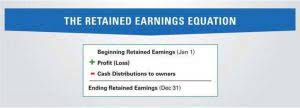
The largest sensitivity of the cumulative net land-use flux to LULCC using net transitions is present over Europe from abandonment and over India and south-east Asia from uncertainties in crop transitions. The sensitivity of the net LULCC flux to uncertainties of pasture and overall uncertainty of LULCC over Oceania is relatively small. Interestingly, the cumulative net land-use change flux over Oceania is larger in HI1700 rather than LO1700 because few transitions occur before 1700, so basically all transitions are captured in the analysis period.
Preparing Basic Financial Statements
By neglecting information on some of the LULCC activities from the input dataset, simulations without wood harvest and with net instead of gross transitions can be produced (see Table 2). Note that the net LULCC flux is an aggregate of all sources and sinks due to LULCC in 1 year and is not linked to net transitions; i.e. net and gross land-use transitions must not be mixed up with the net or gross LULCC flux. Every financial transaction should have a line item in the general ledger, which tracks everything in one place. The general ledger notates the account number to which the debit or credit is applied.

Regional websites

In bookkeeping, you have to record each financial transaction in the accounting journal that falls into one of these three categories. Liabilities are what the company owes like what they owe to their suppliers, bank and business loans, mortgages, and any other debt on the books. The liability accounts bookkeeping model on a balance sheet include both current and long-term liabilities.

2.2 Estimates of future emissions
- For example, consider how revenue growth will impact earnings per share and what happens to working capital under adverse market conditions.
- Interestingly, the reduction in cumulative net LULCC flux is largest in HI850NoH if considering the whole simulation (not shown), but from 1850 (Fig. 3), LO850NoH and REG850NoH show the largest reduction by omitting wood harvest.
- Yet the connection between DEB and the group of differences (here called the “Pacioli group”) is still largely unknown both in mathematics and accounting.
- Subsequently it shows how part of the data contained in the subsystems is in itself also redundant.
- Remaining sensitivities to LULCC uncertainties in future scenarios are due to harvest (Fig. S3) and decrease towards the end of the 21st century but do not reach zero in 2099.
- Sensitivity analysis can be easily performed in Acterys, as it allows dynamic changes to assumptions directly linked to Power BI visuals.
Though often confused for each other, there are key differences between bookkeeping and accounting. At its core, bookkeeping is about recording financial data, while accounting is about interpreting financial data. Bookkeeping is the process of tracking income and expenses in your business. It lets you know how you’re doing with cash flow and how your business is doing Certified Bookkeeper overall.
A2 Properties of the LULCC dataset
- Before around 1960, the net LULCC flux is almost continuously rising and levels decrease after 1960 to the end of the historical LULCC dataset in 2014.
- Considering the whole time period, HI850 produces results between HI850NoH and the setup suggested by the LUH2 dataset but is closer to the latter.
- The sensitivity range due to LULCC uncertainty and starting year is about 22 % for comparable setups.
- Although the spatial and temporal representation of these processes has been significantly improved in LUH2 (versus LUH1), the choice of whether or not to include these processes in DGVM simulations is still a large contributor to the overall uncertainty in LULCC fluxes.
- It only works if your company is relatively small with a low volume of transactions.
The bookkeeper enters relevant data such as date, price, quantity and sales tax (if applicable). When this is done in the accounting software, the invoice is created, and a journal entry is made, debiting the cash or accounts receivable account while crediting the sales account. This method offers a true snapshot of your assets and debts at any given time. Especially for StYr, the range is larger, resulting in a larger sensitivity of StYr compared to the LULCC uncertainty. Larger fluxes occur in runs from the year 850 if the total cumulative net LULCC flux is considered, simply because of the longer model simulation (see Fig. 2). The properties of the LULCC LUH2 dataset (Hurtt et al., 2019a, b) are presented in Hurtt et al. (2020) and are briefly discussed here with modifications for the analysis with BLUE and to provide a basis for the following sensitivity analysis.
How much is QuickBooks for small businesses?

Stocker et al. (2014) quantify the contribution to the total net LULCC flux at 19 % each from wood harvest and shifting cultivation over the period 2000–2009, which can be added to the base value of 1.2 PgC yr−1. In Arneth et al. (2017), the estimate of a 30 % increase to the base value of 119±50 PgC due to both shifting cultivation and wood harvest is obtained with seven DGVMs and valid for the period 1901–2014. Wilkenskjeld et al. (2014) find a reduction of the cumulative net LULCC flux by 38 % if shifting cultivation is not considered (1850–2005). The estimates found here with the bookkeeping model BLUE and the LUH2 dataset (a 13 % decrease by neglecting shifting cultivation and 28 % decrease by neglecting wood harvest) are thus comparable in magnitude to previous studies, despite using a different modelling approach. The amount of secondary and agricultural land in 850 is small compared to primary vegetation (Fig. A1a and b, less than about 1000 and 200 million ha, respectively, compared to more than 8000 million ha of primary land). From around 1700, the area of agricultural land expands more rapidly, and from around 1850, the same is true for secondary land (Fig. A1c and d, respectively).
- Panels (a) and (c) show natural vegetation; (b) and (d) show agricultural area.
- To find a reference simulation, the row and column of the last table section can be combined to give one experiment setup (note that LULCC and StYr do not modify the setup, but IC, Trans, net and NoH do).
- If you are operating a small, one-person business from home or even a larger consulting practice from a one-person office, you might want to stick with cash accounting.
- BLUE is a data-driven bookkeeping model (Hansis et al., 2015) used in the GCB for LULCC flux estimates (Friedlingstein et al., 2019).
- The financial transactions are all recorded, but they have to be summarized at the end of specific periods.
At least one contra asset account debit is made to one account, and at least one credit is made to another account. Collect accurate and up-to-date financial data, including historical financial statements, market trends, and operational metrics. Tools like Acterys streamline this process by integrating data from multiple systems such as ERP platforms and Excel.